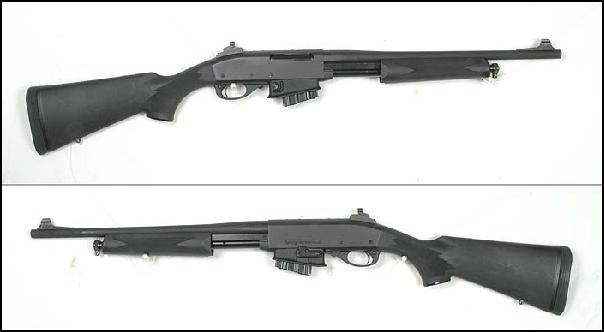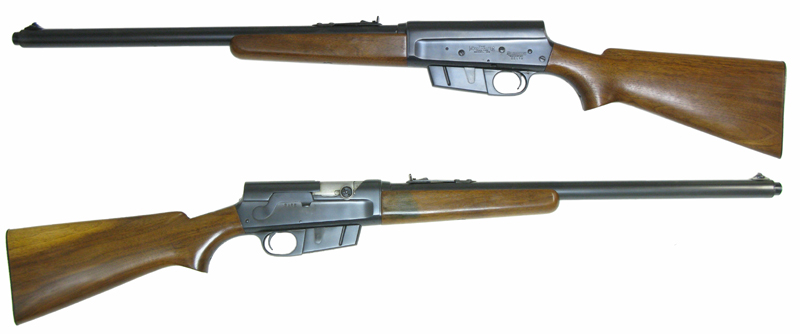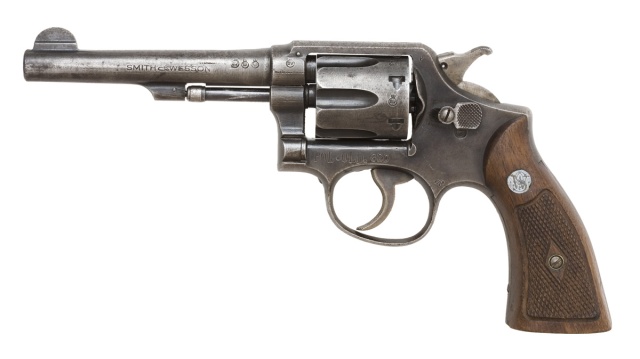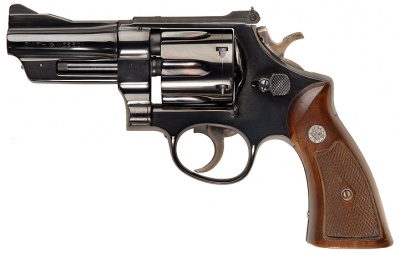Battleunit
-
Content count
14 -
Joined
-
Last visited
Posts posted by Battleunit
-
-
Las Vegas 2017 Miguel Salas Shootout
What Happened: Officers respond to a suspicious vehicle on 2 August, 2017 which stolen sell phones were broadcasting from. The officers are nervous because the department has had a half-dozen OIS in the past year with two dead. The man Miguel Salas draws his weapon in the middle of the stop and shoots the first officer Richard Nelson in the chest. He also shoots Daniel Demarinis in the belt. Daniels is able to return fire while retreating and shoot the subject. The subject retained his pistol in hand and held off police with server brain damage until he expired from his wounds. Of special note: a kid known on Youtube as Steven Scoots can be seen filming the incident. Officers tell the kid to seek cover before the shooting starts. He does, and his video captures a long shot from his hiding place.
-
Glendale Arizona Gunfight 20 January 2017
What Happened: The officer (Anthony Cano) was alerted to the car because it had stolen plates. He approaches the car and asks for ID. The man in the car (Abel Rodriguez) leans way forward and starts fumbling for ID, but he has a gun in his lap he is trying to hide. He lifts the gun and shoots - you can hear his first shot as a muffled bang before the window shatters and it becomes impossible to tell shots apart. The officer disengages from the car, moves to cover, assesses the tactical situation, then makes a covered approach to an vantage point that allows him to prevent the suspect from moving out of the car and taking hostages (who are rather moronically trying to see Officer Cano). During the process Cano assesses his ammunition state and does a tactical reload. Since he has rounds left in his former magazine, he retains it it the crook of his finger for switch back if the battle continues. Despite the suspect failing to toss away his weapon, he does not reengage and instead moves to negotiation mode in order to clear the suspect for medical treatment.
-
.jpg/1200px-Savage_1907_(6825677636).jpg)
The Savage 1907 chambered for .32 ACP or .380 ACP was a little known firearm used by police detectives from 1910 to 1950. Life the M1911 it is a semi-automatic, single action, so it cannot be safely carried in condition one (although some experienced shooters will indeed carry it this way in cocked and locked mode, with leather from the holster between the hammer and firing pin, accidental discharge during drawing is always an issue when this is done). The main reason detectives liked this pistol was that it was 1) equipped with a 9 or 10 round magazine, 2) was low penetration, meaning errant shots were less likely to endanger civilians, 3) was thinner than the Model 36 Smith allowing it to be carried concealed without having to wear a heavy jacket, and 4) it was a natural pointer, making it easy to snap shoot in emergencies and 5) it was very reliable, being the runner up to the 1911 during the 1907 military pistol trials.
No police department officially adopted the Savage, it was usually purchased and owned privately.

The Savage Model 99 was on of those advance weapons (similar to the Remington Model 8) which law enforcement, especially in rural areas, took to from 1900 until the 1950s. While it was never as popular as the Winchester 1892 or Marlin 1894 lever actions, it offered some important advantages. First, the Savage was a hammerless design like a bolt action. This both increased its accuracy and made it safer to shoot. Next, the Savage had a stronger locking mechanism, allowing in to more easily be chambered for high pressure cartridges. Police weapons were often chambered for 30 Government (30/40) or in the 1920a the 300 Savage round (which would be modified into the 7.62 NATO round in the 1950s). The Savage's magazine was also more robust, and as it was a rotary design. Many shooters felt this made the weapon more predictably balanced.
The one controversial issue that shooters either call an advantage or a disadvantage is loading. Unlike the Winchester 1892 which has a loading port, the Savage 99 is loaded though the open action. It was felt at the time that loading through the action would reduce the introduction of mud or dust into the weapon, a problem for any lever action. Port loading though allows the weapon to be topped off easier than action loading since the weapon need not be taken from the shoulder.
Despite this the 99 was prized by prison guards and rural law officers who might have to take accurate shots at range but wanted to be able to use the rapid fire ability of a lever gun in an emergency.

In the 1990s police departments began facing gangs equipped with AK47 derived firearms, body armor, and even weapons modified to fire fully automatic by using bump stocks. Many departments began to look the other way when officers began to equip and carry AR15s. By the end of the decade departments themselves were buying and placing in patrol cars military grade rifles.
In an unusual political move, many gangs began to apply political pressure against police equipping themselves with military weapons, and found considerable support in both the right and left wing political movements. This was combined with the concept of "community policing" where the police themselves were increasingly uncomfortable appearing to be heavily militarized among people they were dedicated to serving. This caused many jurisdictions to pause in there efforts to increase police firepower.
The turn of the century saw not only an increase in terrorism and the revival of heavily armed militias, but also saw the massive increase in active shooter events where police were forced to engage belligerent mass murderers as they used high powered weaponry in the middle of crowded schools, churches, mosques, and airports. The issue here was that police pistols were not accurate enough to selectively target a suspect in a crowded space past a few meters.
The Remington 7615P was seen as on solution. Based on the Remington 7600 pump action rifle (a popular civilian hunting weapon) the 7615P is equipped with an adaptor to allow it to use the standard NATO STANAG magazine of the M16. On its own, the 7615 looks very much like a pump shotgun shotgun, common and accepted by civilian authorized for more than 50 years. In practice the weapon carries a five round magazine, solving the main complaints that advocates for gangs have made concerning police overkill. In an emergency the officer can replace the small magazine with a complete M16 magazine, even sharing them with members of SWAT.

Studies show that a gang member with an AK47 fires an average of 71 shots before hitting their intended target with a high chance of hitting unintended targets. Police with a shoulder weapon at average ranges do much better, between 8 and 12 shots for each hit with a much lower chance of hitting unintended targets. Skills police officers, even with a slower firing rifle like the 7615, still outperform AK armed gang members considerable. Ad the issue of limited ammunition for suppressing or covering fire is solved.
-
Actually, in current training every officer is rapidly becoming a SWAT officer. After Columbine there was a lot of tactical research that showed SWAT response time was making it useless for anything but high-risk warrant service. At Columbine the only officer who even got a shot at the villains was the SRO, who engaged them at long range, stopping them from reaching students fleeing the school. By the time SWAT was suited up and ready to go Kliebold and Dylan were dead. At North Hollywood line officers engaged the two robbers but were forced to break into a gun store and steal AR-15s to effectively suppress the bad guys. SWAT made an amazing effort to arrive, showing up at +18:00 from start of incident, and were instrumental in rescuing wounded and stopping the issue, but even then they were not fully equipped, lacking much of specialized tactical gear.
In my own service 9/11 had many officers grabbing whatever they could find and carrying it in their cars until the official acquisition channels could fight through public resistance and budget issues to get us SWAT weapons. For nearly a year I carried a MAS 49/56 until it was replaced by a M16A1 then an M4. By then we had adopted a four and go policy. When faced with a active shooter the first officer on scene sets up a muster point, and then on arrival of the fourth officer they go in as a stick. A lot of times one of us would be a SWAT officer, but many of us, including the reservists and some of the forensic people who were officers, plus detectives, had the complete SWAT training, we just did not have the continuation training which makes SWAT so good.
As for training, the best there is in my experience is not a trainer but your own sergeant who runs your patrol stick through building and tactical during training sessions. When you take active shooter and building entry you may never see the guys you train with again, but when you train with your district teams you know for sure they will be by your side when it gets real.
-
 1
1
-
-
Police are always in the middle. On one side is the citizen, who is having the worst day of their life courtesy of the person on the other side, the criminal. The criminal operates with no artificial restrictions on their actions. The idea of honor among criminals is a joke maintained by TV. A criminal is a citizen until they become a criminal, and then they remain a citizen until their action are proven beyond a shadow of a doubt in a court of law in front of 12 skeptical citizens who watch too much television.
The police are usually armed worse than criminal. A criminal knows that this is the day they will bring an AK47 to work. If we carry the big heat citizens get pissed. Nothing worse than an elementary school teaching bitching you out in front of your kids when you drop them off at school because your pistol holds four more rounds of ammunition than they think is cool. You have to stand there and take it because it is your job, saying yes ma'am.
(In an MMO it will be worse. With at most a 45 minute cool down for the most heinous crimes one criminal can commit ten violent acts a day (if they have no life) and no real reason not to go down shooting up the town square, the server in a few hours can become a wild west show with no business able to operate, no one able to walk the street, and everyone hiding in their apartments waiting for ceasefire that never happens.)
So how do we keep the peace and RP at the same time? By doing it like professionals and using radios and record keeping.
Patrol officers are the most vulnerable but most essential part of the police force. A patrol officer has a beat that they should walk - if you never get out of your car you miss a lot. The patrol officer is the trained eyes of the rest of the department. They meet with the citizens in their beat, solve minor issues before they become legal issues, and look for people who behavioral patterns indicate they could have issues that may affect the community. It is possible this will be an impossible job. In an MMO server with no real penalties, patrol cops will spend more time dead from ambush by any noob or ganker on the server, but if the patrol system breaks down, effective policing does.
(In real life the death of a patrol officer causes police departments to go bananas . Everyone started here, and everyone knows if the bad guys want you bad enough, they will get you and all of your training, experience, and practice will drain out into a gutter in seconds flat. )
At the same time the patrol officer cannot be corrupt. A corrupt patrol officer is part of the problem, not part of the solution. Most officers will look the other way for small offenses, but CDV, DUI, and any form of assault on up will get an officer forever banned from a modern police force. Corrupt police forces exist, but they are nothing more than another gang dressed in uniforms.
A police officer has those two advantages I mentioned before to aid them. Any officer who finds themselves in hot water can call on the radio and get a partner. That partner can call and get the squad. The corporal can call and get the district. The sergeants can ask the Lieutenant to request SWAT. When a gang member is in trouble, other gang members generally flee. There is no honor except on TV. When an officer is in trouble it is like a black hole sucking more and more officers to the aid until the bad guys are down and out. And if the bad guys kill me, my friends will never stop until the bad guy pays the full legal price.
Plus we have records. Bad guys have no institutional memory, and live in a subjective bubble of slights and misdemeanors. We have records. We do not have to guess if you are a bad actor, we can find out by looking at your file. You can walk down the street and buy a Pepsi and we will not look twice, but if you are holding a smoking gun and have record of shooting at people, we will have a record of it, and that record is often how we catch you. Juries are gullible. they want to believe the poor picked upon bank robber who was only getting change for a five with his shotgun when the heinous police barge in and made a big deal of it. But juries hate looking stupid. A guy who tried to get change for a five with a shotgun ten times will find that they run out of bargaining power.
So radios and record keeping are essential to being a police officer, and will be all that keeps us active if the server rapidly degenerates into sarajevo complete with sniper ally.
-
 2
2
-
-
I would give anything to do this. Have a camp store that other people can put their camp wares in, allow people without apartments to stay in their own tents. Sell bows and rifles. Give opportunities to hunting guides and nature guides to open a business. Slaughter and consume guests.... err, jut kidding.
I really wish I could run a campground
-
As a former officer in the exact same area the game covers most departments were converging on some model of Glock. I carried a Glock 23 on duty (since I was tasked with a lot of forensics) and a Taurus 85 CIA of duty. On 9/11 a lot of officers were forced to bring in their personal rifles that met department needs. I actually ended up with a MAS 49/56 for a few months until they replaced them with M16A1 from federal stocks and eventually M4s. We never used it but the MAS 49/56 had a grenade launcher which could be used to breach doors. My shotgun was an older Model 5.
In the game though I think weapon escalation and turning the streets into free fire zones is bad medicine. Imagine the model
Rank Weapon Assigned
Patrol Officer Recruit (P1) Smith and Wesson Model 10
6-rd .38 special slow reload lower lethality (speed loader option for regular reload)
Patrol Officer (P2) Smith and Wesson Model 19
6-rd .357 magnum slow reload higher lethality (speed loader option for regular reload)
Senior Patrol Officer (P3) Smith and Wesson Model 39
8-rd 9x19mm fast reload standard lethality
Corporal (P4) Smith and Wesson Model 59
15-rd 9x19mm fast reload standard lethality
At sergeant you can stay with patrol, go to detective, go to SWAT, etc. and get better goodies. Detectives and SWAT need to have patrol division staffed so you do not want 100 swathes and one guy on the street.
Justification:
The movement to high firepower weapons in the hands of police is not new. In the 1930s criminals gained access to automatic weapons from National Guard Armories and began using them in crimes. Police forces began in turn to unarm. The process though was gradual, and often had officers with higher rank getting more capable weapons as a way to ensure their competent use. The PA State Troopers is a great example.
In the 1930s in response to body armor being used by bad guys, senior patrol troopers were given the option of buying their own .357 Magnum revolvers, which were pioneered for this use. Junior officers carried a .38 revolver and were only allowed to carry two rounds loads for safe. They would be instructed to load the rest by the senior officer (it was a different era, remember, officers could be given a shoot to kill order then, something illegal today when legal theory revolves around stopping shots.)
The most famous lawmen who fought battle with big criminals often carried very modest weapons, relying on skill rather than firepower. Frank Hamer, facing may Tommy Gun and BAR wielding crooks famously used a Remington Model 8 rifle with an extended magazine to kill these outlaws. When preparing to go up against Bonny and Clyde, Hamer noticed that one of the deputies, Prentiss Oakley, was planning on carrying a shotgun into battle. Hamer showed his own Model 8 in 3 5 Remington and said - go find one of these. Oakley had no other rifle, and had used his friend model 8 (without extended magazine) for hunting, so he borrowed it for the fight. Clyde Borrow was thus killed either by Oakley or Hamer, as it was a 35 Remington shot that was fatal for him.

The Model 8 Rifle was popular among law enforcement when chambered for the .35 Remington Cartridge because of its excellent accuracy (less chance of hitting civilians), its massive stopping power (the rifle was routinely used in the 1930s against elk, moose, and even bear), and because a shooter could make followup shots without lifting their head from its cheek weld. The Model 8 was especially prized for its ability to crack engine blocks. Law enforcement users could get many upgrades for this rifle, including peep sights, stripper clips for fast reload, and even extended magazines that could be removed like ones used on the military BAR. Many experienced police considered this rifle better for ordinary use than more military weapons that became available later because it was less conspicuous to carry and was cheaper (by about $300 bucks) than the Thompson and nearly $1000 than the BAR / Colt Monitor.
Frank Hamer used the Model 8 over the Thompson because he felt his skill shooting was his primary strength. Although generally not a good idea, Hamer often shot to wound, doing so to protect a black suspect from being lynched on one occasion. He considered pistols for emergency, the model 8 as for when he got serious.

The Smith and Wesson Military and Police (Model 10) as for many years the standard pistol used by police in the United States. Designed around the .38 Special round, the Model 10 was rugged (important for police before the age of radio dispatch) easy to use, very safe, and could be topped off with single rounds of ammunition at any point. Unlike earlier revolvers it was carried hammer down on a live round, and could be drawn and fired in a single natural action.

The police billy was a length of lacquered Northern White Ash or Maple designs to be wider at the top than the base and to have a hand grip, which officers sometimes covered with sharkskin. The billy had a number of important uses for a patrol officer. It was used to direct civilians by pointing them in the direction they should go in emergencies. It was used to break windows to effect entry into houses and cars, and it was used for less-than-lethal-fighting. While an amateur could "crack heads" police over the decades developed a fighting system designed to force compliance with orders without harming the citizen the consisted of strikes on large muscles, pinions of the arm or legs, moves to disarm an opponent of knives, and to trip fleeing subjects. One popular use is the door block, preventing a door from being closed in the face of an officer.

On the morning of June 17, 1933 in Kansas City three gangsters tried to break their friend, Frank Nash, out of federal custody. The result was the Kansas City massacre, which would shock Federal law enforcement and be one of the five great "learning moments" in Federal experience. The Model 27, originally called the Registered Magnum (which was custom made and only offered to select buyers) was one of the results. The 357 Magnum round was the result of work by Elmer Keith, who had wanted a "fast and heavy" round that would give the stopping power of the 45 with the accuracy of the 30 Mauser. Owing to the death of three of their officers in the Massacre, Kansas City was the first city to issue the Model 27 / Registered Magnum to all of its officers.
The .357 was disliked by the criminal community because of its reputation of being a "killing round" compared to the so called "humane" .38 special. In the late 1930s when automobiles began sporting plexiglass windows, state patrols noted that their 38 special handgun often failed to penetrate car windows. This resulted in most State Police adopting this pistol, and many would not move to modern autoloaders until the 1990s.
-
 1
1
-

SWAT Training, Gear, and Deployment
in The Precinct
Posted
I am happy the Patrol Officers won't be running around armed to the teeth and heists will be instanced. In a research mud I ran in college we had issues with police and stores. There was so many criminals that basically the bank was being robbed every 15 seconds. Crooks waiting in line to rob the bank or stores would engage any officer or civilian who entered the street sections around the bank. Civilians and cops started basically carrying zombie killer hardware just to go to cast a vote or craft. The issue was that a bad guy could commit far more anti social acts that enforcers could catch, and there was basically no reason tone a civilian since you were dead meat five areas from your door.